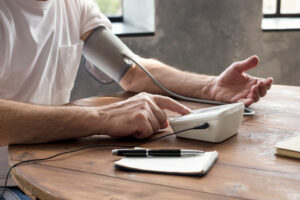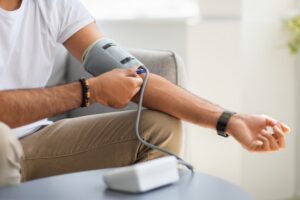Runner’s knee, or patellofemoral pain syndrome, is a frustratingly common ailment that can sideline even the most dedicated runners. That nagging, dull ache around the kneecap can turn a beloved hobby into a painful chore. While rest and stretching are common first steps, for many, the root of the problem lies in their feet. This is where custom orthotics for runner’s knee can be a game-changing solution. By addressing underlying biomechanical issues, the best orthotics for runner’s knee don’t just mask the pain—they correct the cause, helping you get back on track safely and comfortably. Get a consultation with the best Podiatrists in Brooklyn.
Understanding Runner’s Knee and Its Connection to Your Feet
Runner’s knee typically describes pain felt at the front of the knee, around or behind the kneecap. It occurs when the kneecap (patella) tracks incorrectly over the thigh bone (femur) during movement. While weak hip muscles or improper training can be culprits, poor foot mechanics are a major contributing factor.
Your feet are the foundation of your entire body. When they are not properly aligned, it creates a chain reaction of misalignment that travels up your legs to your knees, hips, and even your back.
Common foot issues that contribute to runner’s knee include:
- Overpronation: This is when your foot rolls excessively inward upon landing. This inward motion causes the lower leg to rotate internally, which can pull the kneecap out of its optimal track.
- High Arches (Supination): Feet with very high, rigid arches are less effective at absorbing shock. This means more impact force is transferred up the leg to the knee joint with every step.
- Flat Feet: Similar to overpronation, flat feet can lead to instability and poor alignment, placing additional stress on the knee joint.
How Can Custom Orthotics for Runner’s Knee Help?
Off-the-shelf insoles can provide some cushioning, but they don’t correct underlying biomechanical flaws. Custom orthotics are different. They are medical devices prescribed by a podiatrist and crafted from a precise mold of your feet. Here’s how they specifically help with runner’s knee.
- Correcting Misalignment
The primary function of a custom orthotic is to correct faulty foot mechanics. For someone who overpronates, an orthotic provides the necessary arch support to prevent the foot from collapsing inward. This stabilizes the foot and, in turn, prevents the excessive internal rotation of the lower leg. By keeping your foot, ankle, and leg in proper alignment, the orthotic ensures the kneecap tracks smoothly within its groove, reducing irritation and pain.
- Improving Shock Absorption
Running generates impact forces several times your body weight with every foot strike. If your feet don’t absorb this shock efficiently, your joints take the hit. Custom orthotics can be made with materials that provide superior cushioning and shock absorption, dispersing impact forces more evenly across the foot and reducing the stress transmitted to the knees.
- Providing Support and Stability
Unlike a flimsy gel insert, a custom orthotic is a structured device. It cradles the heel and supports the arch, creating a stable base for your entire body. This added stability reduces strain not only on the ligaments and tendons in your feet but also on the muscles that support your knee.
The Process of Getting Custom Orthotics
If you’re experiencing persistent knee pain, the first step is to get a professional evaluation. An experienced podiatrist can perform a comprehensive gait analysis to identify the biomechanical issues contributing to your runner’s knee.
The process at a professional podiatry clinic in Brooklyn typically involves:
- Initial Consultation: A thorough examination of your feet, ankles, and legs, along with a discussion of your symptoms, activity level, and footwear.
- Gait Analysis: The podiatrist will watch you walk and run to observe your foot mechanics in motion.
- 3D Scanning or Casting: To create a truly custom device, a precise digital scan or plaster cast of your feet is taken. This captures the unique contours of your arches and any specific deformities.
- Fabrication: Your scans or casts are sent to a lab where your custom orthotics are fabricated from durable, high-quality materials chosen specifically for your needs.
- Fitting: Once your orthotics are ready, you’ll have a fitting appointment to ensure they fit correctly in your shoes and are comfortable.
Finding the Right Professional Help
While it may be tempting to grab an insert from the pharmacy, self-treating can sometimes worsen the problem. For a condition like runner’s knee, where the cause can be complex, expert guidance is key. Visiting a specialized podiatry clinic in Brooklyn ensures that you receive an accurate diagnosis and a treatment plan tailored to your specific anatomy and running style. A qualified podiatrist can determine if custom orthotics are the right solution for you and design a device that addresses the true source of your pain.
Runner’s knee doesn’t have to mean the end of your running journey. By addressing the foundational issue of poor foot mechanics with custom orthotics, you can alleviate pain, prevent future injury, and continue to enjoy the sport you love. At Doral Health & Wellness, we have Podiatrists with extensive education and expertise. Our address is 1797 Pitkin Avenue, New York, NY 11212. To make an appointment, please call + 1 718 367 2555, or register your information and make direct contact with us at https://yuz88hfiyh7.typeform.com/Doralintake or send an email to info@doralhw.org.






